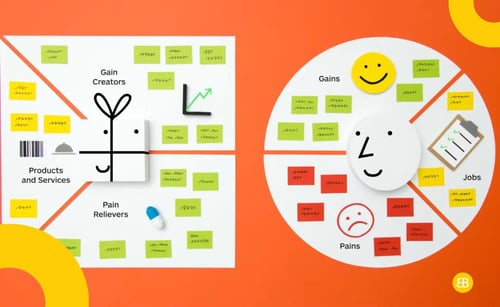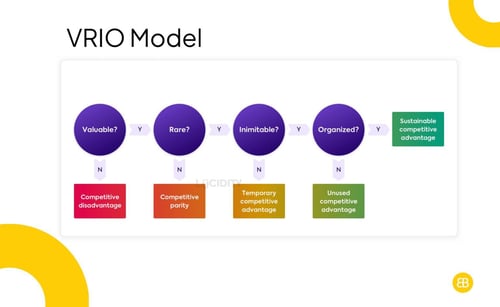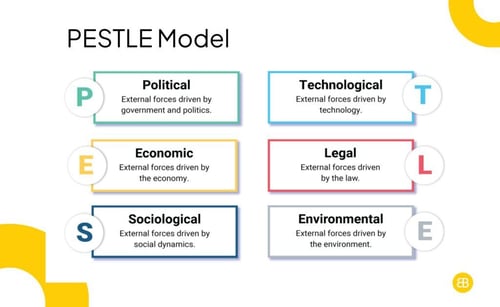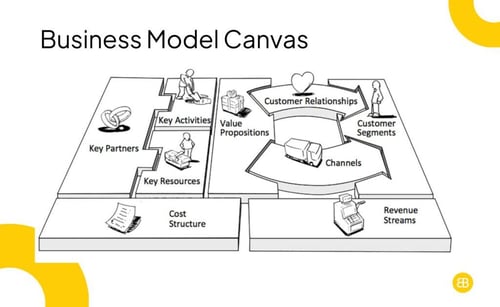Table of Contents
Sometimes, starting a new business goes exactly as planned. Other times, it ends in failure, and we’re left wondering where we went wrong.
If you’ve tried and failed to launch your own business, you might feel like your business idea was bad to begin with or you’re not a good enough businessman. That’s not true – you are part of the majority, as an astounding 90% of start-ups fail!
This article will delve into why this happens and what you can do to avoid it. So don’t scrap your next business plan just yet, as you might find our tips valuable for building a successful business.
Why Do Startups Businesses Fail?

This is one of the most complicated questions to answer. There are a variety of reasons why your small business may flop before it even properly launches.
- Poor Risk Management
Ineffective risk management often leads to strategy execution failure. Many companies neglect internal risks, risking their financial health. Leaders struggle to monitor multiple aspects simultaneously. Implementing a structured enterprise risk management approach helps businesses identify, assess, and mitigate both internal and external risks, ensuring long-term stability.
Preventing "bad employee behaviour" requires robust internal controls—structural, systems, and staff safeguards. These controls mitigate risks by ensuring reliable accounting and safeguarding assets, positively impacting long-term operational and financial performance.
- Inefficient Distribution of Resources
Effective resource allocation is crucial for strategic success. Job design plays a vital role in strategy execution; without adequate resources and accountability, potential remains untapped.
The Job Design Optimization Tool (JDOT) aids in aligning jobs with strategy and assessing aspects like the span of control, accountability, influence, and support. Wider spans of control should be assigned to those directly supporting business objectives for successful strategy execution.
- Abstract Strategic Objectives
Underestimating the impact of business goals and objectives is a common strategy implementation mistake. The Economist Intelligence Unit found that 90% of senior executives failed to achieve strategic goals due to poor implementation.
Tools like the balanced scorecard, with a strategy map, provide a comprehensive approach to measuring activities essential for value creation, ensuring consistency and alignment in strategy execution.
- Disproportion Between Control and Innovation
Innovation is crucial for long-term success, but it must align with business strategy. To address this, setting strategic boundaries helps define the market position and guide innovation without hindering overall strategy. Restrictions act as guidelines to ensure innovation aligns with the business strategy's direction.
- The Missing Backbone of the Company
Effective strategy execution requires the support of employees, stakeholders, and customers.
Communication of core values, such as innovation and diversity, aligns strategy with purpose, fostering employee engagement. Success lies not just in strategic initiatives, but in building a workforce aligned with the company's larger purpose.
Crafting a Distinctive Value Proposition
Talking about why a business model might fail is not enough — we also need to address what the most important strategies for success are, starting with the value proposition.

Forging a Unique Market Identity
To succeed in today's cut-throat business environment, when half of all companies fail to identify their competitive advantages, it is essential to identify and capitalise on your distinct advantages. Introducing the VRIO system.
To find and keep their competitive edge over the long run, businesses use the VRIO framework, a tool for strategic planning. Critical to a company's success is maintaining a competitive advantage that competitors will have a hard time replicating in the near future.
The VRIO framework aids firms in identifying internal resources for sustainable competitive advantage. VRIO stands for Value, Rareness, Inimitability, and Organisation.
- Valuable resources strategically exploit opportunities or mitigate threats, with intangible resources being the most valuable.
- Rare resources are not easily accessible to competitors, allowing differentiation or cost advantages.
- Inimitable resources, challenging to copy, may result from historical conditions, causal ambiguity, or social complexity, with intangible resources being particularly hard to imitate.
- For a competitive advantage, the business structure must be organised to exploit VRIO resources effectively, involving control systems, reporting relationships, compensation policies, and management interfaces.
The framework helps distinguish resources from core competencies and provides small business owners with insights into their organisation’s competitive position.
Success Story
Apple Inc. serves as a practical illustration of the VRIO model's success. Apple's products, like the iPhone and Mac, not only offer significant customer value but also embody innovative designs, top-notch components, and user-friendly interfaces, setting Apple apart in the technology industry.
The rarity of Apple's resources, including its design team and supply chain, contributes to its success, with the design team setting industry trends and the supply chain being well-organised. Imitating Apple is challenging due to its extensive patent portfolio, continuous research and development investments, and unique designs.
Apple's resources are effectively organised within its operations, spanning supply chain, marketing, and product development, creating a distinctive and cohesive customer experience.

Comprehensive Risk Analysis
Recognising, assessing, and preparing for possible hazards is what risk management is all about in the corporate world. Businesses can avoid wasting money and get the most of their earnings by applying risk management insights.
PESTLE analysis is a widely used business tool that evaluates Political, Economic, Sociocultural, Technological, Legal, and Environmental factors impacting a business. Primarily employed in risk management, it provides a structured framework to identify potential risks.

Each category reveals specific risks – for instance, Political changes affecting trade. Sociocultural shifts, like changing consumer habits, can impact businesses. Technological advancements may render some businesses obsolete, while Legal threats and Environmental concerns, such as regulatory changes, pose risks.
PESTLE analysis considers both positive and negative factors, but in risk management, the focus is on identifying and addressing negative elements.
Mastering Market Dynamics and Disruption
For small businesses to thrive, they need to understand the market and, more importantly, how to navigate its disruptions.

Embracing Contrarian Thinking
Peter Thiel argues that to find fresh and original possibilities, one must be willing to challenge the status quo and think contrary to popular opinion. True innovations frequently originate from individuals prepared to think creatively and question the current quo, and Thiel urges entrepreneurs to do just that.
One way to make huge, game-changing discoveries in business and technology is to practice contrarian thinking, which entails seeking out possibilities and ideas that people would ignore or disregard.
Instead of responding to changes made by competition, entrepreneurs can position themselves to lead shifts in their business by anticipating market disruptions and responding proactively to emerging trends.
Contrarian thinkers influence market dynamics by innovating outside the mainstream, bringing revolutionary ideas that connect with changing consumer requirements and reimagine the competitive landscape.
Lessons from Market Misjudgments
Famous for its corporate leadership, GE has been through a lot since the financial crisis of 2008. Tragically, GE Capital's energy market judgment was off, and the company invested extensively in fossil fuels at a time when the world was moving away from them and towards greener, more sustainable energy. The corporation was led astray from the path of energy innovation by a series of poor decisions.
Hundreds of billions of dollars were lost as a result of these and other blunders, which prompted CEO Jeff Immelt to retire early and led to John Flannery's dismissal after less than a year on the job. By 2021, the once-behemoth conglomerate had reduced itself to only three publicly traded companies.
Optimising Revenue Models
When it comes to revenue model optimisation, we can once again look into Thiel’s theory – this time, on monopolisation.
Designing Monopolistic Revenue Streams
In the realm of optimising revenue streams for startups, Peter Thiel's contrarian perspective, as articulated in "Zero to One," challenges conventional notions. Thiel advocates for the pursuit of monopoly status, asserting that it is the cornerstone of a successful business.
Monopolies, according to Thiel, grant the freedom to dictate prices, strategise for the long term, foster innovation, and pursue loftier goals. This starkly contrasts with the competitive landscape, where businesses risk replaceability.
By embracing this unorthodox approach, start-ups can potentially unlock new avenues for revenue optimisation, transcending the limitations imposed by market competition. Thiel's philosophy challenges start-ups to rethink traditional models, fostering an environment where innovation and long-term thinking take precedence over mere survival in a crowded marketplace.
Adopting The 5 Scrum Values

The five Scrum values are as follows:
- Commitment — emphasises dedication to team objectives, addressing challenges openly, seeking continuous improvement and ensuring prioritization of value-added tasks with support from effective communication and sprint planning by Scrum masters.
- Focus — essential for task efficiency and teamwork during sprints, emphasising distraction elimination, avoiding multitasking, and ensuring manageable workloads through open communication in standup meetings.
- Openness — promotes a culture of transparent communication, encouraging diverse ideas and individual honesty about capabilities to avoid bottlenecks and missed deadlines.
- Respect — treating everyone equally, appreciating diverse strengths, trusting team members in their assigned roles, and fostering effective communication by accepting constructive criticism.
- Courage — pushing beyond comfort zones, focusing on team goals, asking tough questions, and challenging the status quo for continuous improvement.
These principles are the backbone of Scrum methodology, outlining how each team member should act to improve communication and cooperation and raise the likelihood of a project's successful completion.
Team members, stakeholders, product owners, and Scrum masters are the four main member categories of a Scrum team. The satisfaction of the client or consumer is the ultimate aim of every one of these people. Above all else, this value is the result of the unique contributions of every team member.
Execution Excellence and Leadership Impact
For innovation to be a true driver of success, companies must invest in it and give it strong leadership. One way to do so is to add a Chief Entrepreneur alongside the Chief Executive Officer (CEO) in the leading positions of the company structure.
Businesses in the 21st century will need to do more than just introduce new products or tweak their current business models if they want to see significant and sustained development. There will be insufficient growth from these activities going forward.
Someone who is great at both executing plans and focusing on the here and now, and someone who is great at entrepreneurship and focused on creating new possibilities for the future, are necessary for success in both fields. Your company can't continue operating without an innovation engine.
Tools for Fostering Innovation
Strategyzer mentions two indispensable tools for innovation in start-ups:
The Business Model Canvas
This is a tool for entrepreneurs and strategic managers, which they can use to sketch out their company model, test it, come up with new ideas, and even change it. Many of the world's most successful companies and start-ups use this strategy.

The Value Proposition Canvas
To better position a product or service around the customer's values and needs, the Value Proposition Canvas might be a useful tool. Dr. Alexander Osterwalder first created the Value Proposition Canvas to help determine if a product is a good fit for the market.
There are many more tools and strategies that Strategyzer talks about in their book The Invincible Company, which are worth checking out as an entrepreneur.
Measuring Strategy Success
Your entrepreneurial journey does not stop at strategising and executing. Market research will sometimes prove to not reflect as well as you thought it would in your business bank account. That’s why employing the following measurement steps is crucial:
- Reframe Objectives
To ensure effective strategy execution, revisit and assess performance goals against critical performance variables using tools like strategy maps and balanced scorecards, allowing for the identification of potential issues and achievements.
- Evaluate Metrics
Assess the alignment, objectivity, completeness, and responsiveness of performance metrics by questioning their relevance to the strategy, objectivity, and linkage to economic value. Utilise balanced scorecards for a comprehensive overview of business performance measures.
- Monitor Systems
Implement diagnostic control systems like balanced scorecards and supplement them with other monitoring tools, such as analytics from customer relationship management systems. Ensure careful design and alignment of these systems to effectively evaluate strategic plans.
- Engage Employees
Leverage employee feedback and engagement as valuable indicators of strategy success. Encourage open communication and foster a collaborative environment that enhances strategy execution.
- Seek Customer Input
Customer satisfaction serves as a vital metric for strategic success. Regularly collect feedback through surveys and direct communication via email, social media accounts, and even face-to-face interactions, to gauge alignment with customer expectations, strengthen market position, and drive profit margins.
Frequently Asked Questions
Let’s answer some of the most frequent questions about start-ups.
What Do I Do If My Start-Up Fails?
After the formal part is over, don’t let this failure discourage you – most entrepreneurs try multiple times before their business grows successfully.
What Qualifies as a Start-Up?
In the beginning, these businesses often have large expenses and low revenues, therefore they seek funding from many sources, including venture capitalists.
How Do I Protect My Start-Up Idea?
You have the option to apply for copyrights, trademarks, and patents. While your business is still in its early stages, you should consider requesting a patent to temporarily safeguard any exclusive information you may have, even including your business name.
Conclusion
Start-ups fail all the time, and sometimes it's difficult to pinpoint where it went wrong. This article shows you the biggest mistakes start-ups tend to make in their business structures and decisions, and what you can do to build an invincible business.
If you want to discuss more about how to set your business up for success, book a free consultation with us and let’s discuss!

Akash, COO at EB Pearls, blends technical expertise with business acumen, driving the creation of successful products for clients.
Read more Articles by this Author
